Specific resistance of zinc. Electrical resistivity of metals and their alloys, semiconductors and dielectrics. Specific resistance of insulators
As soon as electricity left the laboratories of scientists and began to be widely introduced into practice Everyday life, the question arose about searching for materials that have certain, sometimes completely opposite, characteristics in relation to the flow through them electric current.
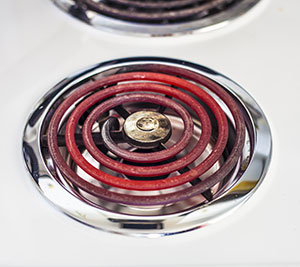
For example, when transferring electrical energy over long distances, the wire material was subject to requirements to minimize losses due to Joule heating in combination with low weight characteristics. An example of this is the familiar high-voltage power lines made of aluminum wires with steel core.
Or, conversely, to create compact tubular electric heaters, materials with relatively high electrical resistance and high thermal stability were required. The simplest example of a device that uses materials with similar properties is the burner of an ordinary kitchen electric stove.
Conductors used in biology and medicine as electrodes, probes and probes require high chemical resistance and compatibility with biomaterials, combined with low contact resistance.
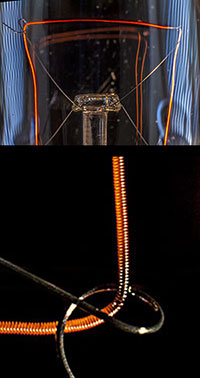
A whole galaxy of inventors from different countries: England, Russia, Germany, Hungary and the USA. Thomas Edison, having conducted more than a thousand experiments testing the properties of materials suitable for the role of filaments, created a lamp with a platinum spiral. Edison's lamps, although they had a long service life, were not practical due to high cost source material.
Subsequent work by the Russian inventor Lodygin, who proposed using relatively cheap, refractory tungsten and molybdenum with a higher resistivity as filament materials, found practical use. In addition, Lodygin proposed pumping air out of incandescent lamp cylinders, replacing it with inert or noble gases, which led to the creation modern lamps incandescent Pioneer of mass production of affordable and durable electric lamps became the General Electric company, to which Lodygin assigned the rights to his patents and then successfully worked in the company’s laboratories for a long time.

This list can be continued, since the inquisitive human mind is so inventive that sometimes, to solve a certain technical problem, it needs materials with hitherto unprecedented properties or with incredible combinations of these properties. Nature can no longer keep up with our appetites and scientists from all over the world have joined the race to create materials that have no natural analogues.
One of the most important characteristics of both natural and synthesized materials is the specific electrical resistance. Example electrical appliance, in which this property is used in its pure form, can serve as a fuse that protects our electrical and electronic equipment from exposure to current exceeding permissible values.
It should be noted that it is homemade substitutes for standard fuses, made without knowledge of the resistivity of the material, that sometimes cause not only burnout various elements electrical diagrams, but also fires in houses and wiring fires in cars.

The same applies to replacing fuses in power networks, when instead of a fuse of a lower rating, a fuse with a higher operating current rating is installed. This leads to overheating of the electrical wiring and even, as a consequence, to fires with dire consequences. This is especially true for frame houses.
Historical reference
The concept of electrical resistivity appeared thanks to the works of the famous German physicist Georg Ohm, who theoretically substantiated and, through numerous experiments, proved the connection between current strength, electromotive force batteries and the resistance of all parts of the circuit, thus discovering the law of elementary electrical circuit, later named after him. Ohm studied the dependence of the magnitude of the flowing current on the magnitude of the applied voltage, on the length and shape of the conductor material, as well as on the type of material used as a conducting medium.
At the same time, we must pay tribute to the work of Sir Humphry Davy, an English chemist, physicist and geologist, who was the first to establish the dependence of the electrical resistance of a conductor on its length and cross-sectional area, and also noted the dependence of electrical conductivity on temperature.
Studying the dependence of the flow of electric current on the type of materials, Ohm discovered that each conductive material available to him had some characteristic characteristic of resistance to the flow of current inherent only to it.
It should be noted that in Ohm’s time, one of the most common conductors today - aluminum - had the status of a particularly precious metal, so Ohm limited himself to experiments with copper, silver, gold, platinum, zinc, tin, lead and iron.
Ultimately, Ohm introduced the concept of electrical resistivity of a material as a fundamental characteristic, knowing absolutely nothing about the nature of current flow in metals or the dependence of their resistance on temperature.
Specific electrical resistance. Definition
Electrical resistivity or simply resistivity - fundamental physical characteristic conductive material, which characterizes the ability of a substance to prevent the flow of electric current. It is denoted by the Greek letter ρ (pronounced rho) and is calculated based on the empirical formula for calculating resistance obtained by Georg Ohm.
or, from here
where R is resistance in Ohms, S is area in m²/, L is length in m
The dimension of electrical resistivity in the International System of Units (SI) is expressed in Ohm m.
This is the resistance of a conductor 1 m long and a cross-sectional area of 1 m² / 1 ohm.
In electrical engineering, for the convenience of calculations, it is customary to use the derivative of the electrical resistivity value, expressed in Ohm mm²/m. Resistivity values for the most common metals and their alloys can be found in the corresponding reference books.
Tables 1 and 2 show the resistivity values of various most common materials.
Table 1. Resistivity some metals
Table 2. Resistivity of common alloys
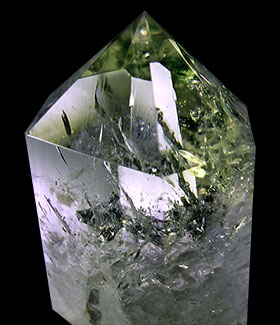
Specific electrical resistances of various media. Physics of phenomena
Electrical resistivity of metals and their alloys, semiconductors and dielectrics
Today, armed with knowledge, we are able to calculate in advance the electrical resistivity of any material, both natural and synthesized, based on its chemical composition and expected physical condition.
This knowledge helps us in the best possible way use the possibilities of materials, sometimes very exotic and unique.
Due to prevailing ideas, from the point of view of physics solids are divided into crystalline, polycrystalline and amorphous substances.
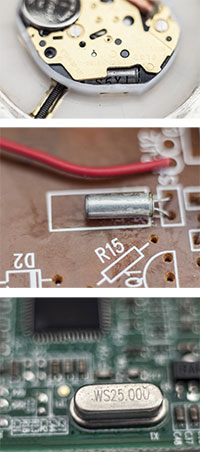
The easiest way, in the sense of technical calculation of resistivity or its measurement, is with amorphous substances. They do not have a pronounced crystalline structure (although they may have microscopic inclusions of such substances), are relatively homogeneous in chemical composition and exhibit properties characteristic of a given material.
In polycrystalline substances, formed by a collection of relatively small crystals of the same chemical composition, the behavior of properties is not very different from the behavior amorphous substances, since electrical resistivity is usually defined as an integral cumulative property of a given material sample.
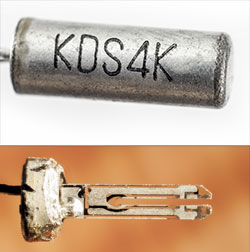
The situation is more complicated with crystalline substances, especially with single crystals that have different electrical resistivity and other electrical characteristics relative to the symmetry axes of their crystals. This property is called crystal anisotropy and is widely used in technology, in particular, in radio circuits of quartz oscillators, where frequency stability is determined precisely by the generation of frequencies inherent in a given quartz crystal.
Each of us, being the owner of a computer, tablet, mobile phone or smartphone, including wristwatch owners electronic watch up to iWatch, at the same time is the owner of a quartz crystal. From this we can judge the scale of use of quartz resonators in electronics, amounting to tens of billions.
Additionally, the resistivity of many materials, especially semiconductors, is temperature dependent, so reference data is usually given at the measurement temperature, usually 20°C.
The unique properties of platinum, which has a constant and well-studied dependence of electrical resistivity on temperature, as well as the possibility of obtaining a high-purity metal, served as a prerequisite for the creation of sensors based on it in a wide temperature range.
For metals, the spread of reference values of resistivity is determined by the methods of preparing samples and the chemical purity of the metal of a given sample.
For alloys, a greater scatter in the reference resistivity values is due to the methods of preparing samples and the variability of the alloy composition.
Specific electrical resistance of liquids (electrolytes)

The understanding of the resistivity of liquids is based on the theories of thermal dissociation and the mobility of cations and anions. For example, in the most common liquid on Earth - ordinary water, some of its molecules, under the influence of temperature, disintegrate into ions: H+ cations and OH– anions. When an external voltage is applied to electrodes immersed in water under normal conditions, a current arises due to the movement of the above-mentioned ions. As it turned out, entire associations of molecules are formed in water - clusters, sometimes combining with H+ cations or OH– anions. Therefore, the transfer of ions by clusters under the influence electrical voltage happens like this: accepting the ion in the direction of the applied electric field on the one hand, the cluster “drops” a similar ion on the other side. The presence of clusters in water perfectly explains the scientific fact that at a temperature of about 4 °C water has highest density. Most of water molecules are located in clusters due to the action of hydrogen and covalent bonds, practically in a quasicrystalline state; thermal dissociation is minimal, and the formation of ice crystals, which has a lower density (ice floats in water), has not yet begun.
In general, the resistivity of liquids is more dependent on temperature, so this characteristic is always measured at a temperature of 293 K, which corresponds to a temperature of 20 °C.
In addition to water there is big number other solvents capable of creating cations and anions of soluble substances. Knowledge and measurement of the resistivity of such solutions is also of great practical importance.
For aqueous solutions of salts, acids and alkalis, the concentration of the solute plays a significant role in determining the resistivity of the solution. An example is the following table, which shows the resistivity values of various substances dissolved in water at a temperature of 18 °C:
Table 3. Values of resistivity of various substances dissolved in water at a temperature of 18 °C
The table data is taken from the Brief Physical and Technical Reference Book, Volume 1, - M.: 1960
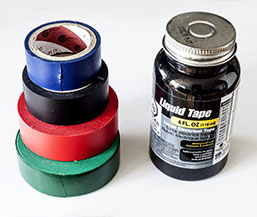
Specific resistance of insulators
A whole class of various substances that have a relatively high resistivity is of great importance in the fields of electrical engineering, electronics, radio engineering and robotics. Regardless of their state of aggregation, whether it is solid, liquid or gas, such substances are called insulators. Such materials are used for insulation individual parts electrical circuits from each other.
An example of solid insulators is the familiar flexible electrical tape, thanks to which we restore the insulation when connecting various wires. Many people are familiar with porcelain suspension insulators. air lines power transmission, textolite boards with electronic components included in most products electronic technology, ceramics, glass and many other materials. Modern solid insulating materials made on the basis of plastics and elastomers safe to use electric current of various voltages in a wide variety of devices and instruments.
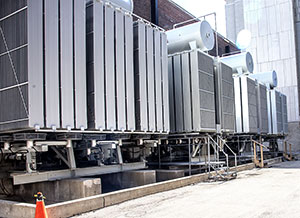
In addition to solid insulators, liquid insulators with high resistivity are widely used in electrical engineering. IN power transformers electrical networks liquid transformer oil prevents interturn breakdowns due to Self-induced emf, reliably insulating the turns of the windings. IN oil switches oil is used to extinguish the electric arc that occurs when switching current sources. Capacitor oil is used to create compact capacitors with high electrical characteristics; In addition to these oils, natural castor oil and synthetic oils are used as liquid insulators.
Under normal conditions atmospheric pressure All gases and their mixtures are excellent insulators from the point of view of electrical engineering, but noble gases (xenon, argon, neon, krypton), due to their inertness, have a higher resistivity, which is widely used in some areas of technology.
But the most common insulator is air, mainly consisting of molecular nitrogen (75% by weight), molecular oxygen (23.15% by weight), argon (1.3% by weight), carbon dioxide, hydrogen, water and some admixtures of various noble gases. It isolates the flow of current in ordinary household switches lights, relay-based current switches, magnetic starters and mechanical switches. It should be noted that a decrease in the pressure of gases or their mixtures below atmospheric pressure leads to an increase in their electrical resistivity. The ideal insulator in this sense is vacuum.

Electrical resistivity of various soils
One of the most important ways protection of a person from the damaging effects of electric current during electrical installation accidents is a device protective grounding.
It is the intentional connection of the casing or housing of electrical devices to a protective grounding device. Typically, grounding is carried out in the form of steel or copper strips, pipes, rods or corners buried in the ground to a depth of more than 2.5 meters, which in the event of an accident ensure the flow of current along the circuit device - housing or casing - earth - neutral wire source alternating current. The resistance of this circuit should be no more than 4 ohms. In this case, the voltage on the body of the emergency device is reduced to values safe for humans, and automatic devices protection of the electrical circuit in one way or another turns off the emergency device.
When calculating protective grounding elements, knowledge of the resistivity of soils, which can vary widely, plays a significant role.
In accordance with the data in the reference tables, the area of the grounding device is selected, the number of grounding elements and the actual design of the entire device are calculated from it. The structural elements of the protective grounding device are connected by welding.
Electrical tomography
Electrical prospecting studies the near-surface geological environment and is used to search for ore and non-metallic minerals and other objects based on the study of various artificial electric and electromagnetic fields. A special case of electrical prospecting is Electrical Resistivity Tomography - a method for determining properties rocks according to their specific resistance.
The essence of the method is that at a certain position of the electric field source, voltage measurements are taken on various probes, then the field source is moved to another location or switched to another source and the measurements are repeated. Field sources and field receiver probes are placed on the surface and in wells.
Then the obtained data is processed and interpreted using modern computer processing methods, which make it possible to visualize information in the form of two-dimensional and three-dimensional images.

Being very precise method search, electrical tomography provides invaluable assistance to geologists, archaeologists and paleozoologists.
Determining the form of occurrence of mineral deposits and the boundaries of their distribution (contouring) makes it possible to identify the occurrence of vein deposits of minerals, which significantly reduces the costs of their subsequent development.
For archaeologists, this search method provides valuable information about the location of ancient burials and the presence of artifacts in them, thereby reducing excavation costs.
Paleozoologists use electrical tomography to search for the fossilized remains of ancient animals; the results of their work can be seen in natural science museums in the form of stunning reconstructions of the skeletons of prehistoric megafauna.
In addition, electrical tomography is used during construction and subsequent operation. engineering structures: high-rise buildings, dams, dikes, embankments and others.
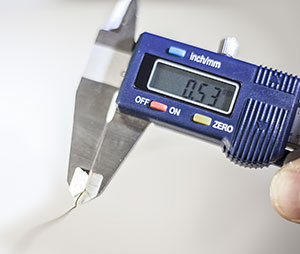
Definitions of resistivity in practice
Sometimes for a solution practical problems We may be faced with the task of determining the composition of a substance, for example, a wire for cutting polystyrene foam. We have two coils of wire of suitable diameter from various materials unknown to us. To solve the problem, it is necessary to find their electrical resistivity and then, using the difference in the found values or using a lookup table, determine the wire material.
We measure with a tape measure and cut 2 meters of wire from each sample. Let's determine the diameters of the wires d₁ and d₂ with a micrometer. Having turned on the multimeter to the lower limit of resistance measurement, we measure the resistance of the sample R₁. We repeat the procedure for another sample and also measure its resistance R₂.
Let us take into account that the cross-sectional area of the wires is calculated by the formula
S = π ∙ d 2 /4
Now the formula for calculating electrical resistivity will look like this:
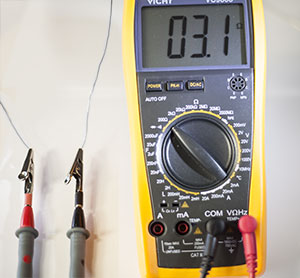
ρ = R ∙ π ∙ d 2 /4 ∙ L
Substituting the obtained values of L, d₁ and R₁ into the formula for calculating the resistivity given in the article above, we calculate the value of ρ₁ for the first sample.
ρ 1 = 0.12 ohm mm 2 /m
Substituting the obtained values of L, d₂ and R₂ into the formula, we calculate the value of ρ₂ for the second sample.
ρ 2 = 1.2 ohm mm 2 /m
From a comparison of the values of ρ₁ and ρ₂ with the reference data in Table 2 above, we conclude that the material of the first sample is steel, and the second is nichrome, from which we will make the cutter string.
They call the ability of a metal to pass a charged current through itself. In turn, resistance is one of the characteristics of a material. The greater the electrical resistance at a given voltage, the less it will be. It characterizes the force of resistance of a conductor to the movement of charged electrons directed along it. Since the property of transmitting electricity is the reciprocal of resistance, it means that it will be expressed in the form of formulas as the ratio 1/R.
Resistivity always depends on the quality of the material used in the manufacture of devices. It is measured based on the parameters of a conductor with a length of 1 meter and a cross-sectional area of 1 square millimeter. For example, the specific resistance property for copper is always equal to 0.0175 Ohm, for aluminum - 0.029, iron - 0.135, constantan - 0.48, nichrome - 1-1.1. The resistivity of steel is equal to the number 2*10-7 Ohm.m
The resistance to current is directly proportional to the length of the conductor along which it moves. The longer the device, the higher the resistance. It will be easier to understand this relationship if you imagine two imaginary pairs of vessels communicating with each other. Let the connecting tube remain thinner for one pair of devices, and thicker for the other. When both pairs are filled with water, the transfer of liquid through a thick tube will be much faster, because it will have less resistance to the flow of water. By this analogy, it is easier for him to pass along a thick conductor than a thin one. 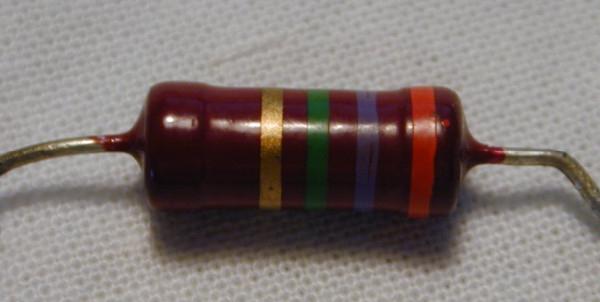
Resistivity, as an SI unit, is measured by Ohm.m. Conductivity depends on the average free flight length of charged particles, which is characterized by the structure of the material. Metals without impurities, which have the most correct smallest values counteraction. Conversely, impurities distort the lattice, thereby increasing its performance. The resistivity of metals is located in a narrow range of values at normal temperatures: from silver from 0.016 to 10 μΩm (alloys of iron and chromium with aluminum).
On the features of the movement of charged  electrons in a conductor are influenced by temperature, since as it increases, the amplitude of wave oscillations of existing ions and atoms increases. As a result, there are fewer electrons left free space for normal running crystal lattice. This means that the obstacle to orderly movement increases. The resistivity of any conductor, as usual, increases linearly with increasing temperature. Semiconductors, on the contrary, are characterized by a decrease with increasing degrees, since this results in the release of many charges that directly create an electric current.
electrons in a conductor are influenced by temperature, since as it increases, the amplitude of wave oscillations of existing ions and atoms increases. As a result, there are fewer electrons left free space for normal running crystal lattice. This means that the obstacle to orderly movement increases. The resistivity of any conductor, as usual, increases linearly with increasing temperature. Semiconductors, on the contrary, are characterized by a decrease with increasing degrees, since this results in the release of many charges that directly create an electric current.
The process of cooling some metal conductors is known to desired temperature brings their resistivity to an abrupt state and drops to zero. This phenomenon was discovered in 1911 and called superconductivity.
Content:The resistivity of metals is their ability to resist electric current passing through them. The unit of measurement for this quantity is Ohm*m (Ohm-meter). The symbol is used greek letterρ (rho). High resistivity readings mean poor conductivity electric charge one material or another.
Steel Specifications
Before considering the resistivity of steel in detail, you should familiarize yourself with its basic physical and mechanical properties. Due to its qualities, this material is widely used in production sector and other areas of people's lives and activities.
Steel is an alloy of iron and carbon, contained in an amount not exceeding 1.7%. In addition to carbon, steel contains a certain amount of impurities - silicon, manganese, sulfur and phosphorus. In terms of its qualities, it is significantly better than cast iron, can be easily hardened, forged, rolled and other types of processing. All types of steels are characterized by high strength and ductility.
According to its purpose, steel is divided into structural, tool, and also with special physical properties. Each of them contains a different amount of carbon, thanks to which the material acquires certain specific qualities, for example, heat resistance, heat resistance, resistance to rust and corrosion.
A special place is occupied by electrical steels, produced in sheet format and used in the production of electrical products. To obtain this material, silicon is doped, which can improve its magnetic and electrical properties.
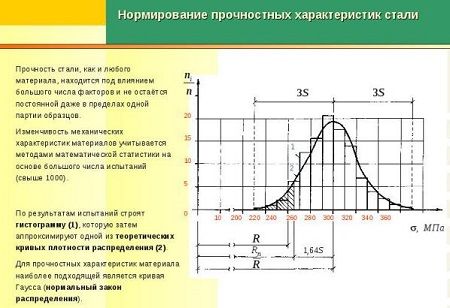
In order for electrical steel to acquire the necessary characteristics, certain requirements and conditions must be met. The material must be easily magnetized and remagnetized, that is, have high magnetic permeability. Such steels have good , and their magnetization reversal is carried out with minimal losses.
The dimensions and weight of magnetic cores and windings, as well as the coefficient, depend on compliance with these requirements. useful action transformers and their operating temperature. The fulfillment of the conditions is influenced by many factors, including the resistivity of steel.
Resistivity and other indicators
The value of electrical resistivity is the ratio of the electric field strength in the metal and the current density flowing in it. For practical calculations, the formula is used: in which ρ is the resistivity of the metal (Ohm*m), E- electric field strength (V/m), and J- electric current density in the metal (A/m2). At very high electric field strength and low current density, the resistivity of the metal will be high.
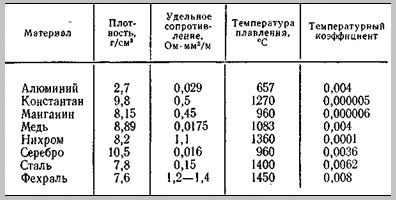
There is another quantity called electrical conductivity, the reciprocal of resistivity, indicating the degree of conductivity of electric current by a particular material. It is determined by the formula and expressed in units of S/m - siemens per meter.
Resistivity is closely related to electrical resistance. However, they have differences among themselves. In the first case, this is a property of the material, including steel, and in the second case, the property of the entire object is determined. The quality of a resistor is influenced by a combination of several factors, primarily the shape and resistivity of the material from which it is made. For example, if a thin and long wire was used to make a wirewound resistor, then its resistance will be greater than that of a resistor made from a thick and short wire of the same metal.
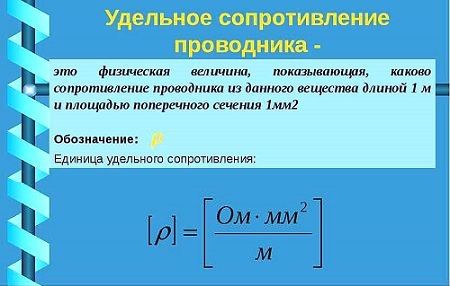
Another example is resistors made of wires of the same diameter and length. However, if in one of them the material has a high resistivity, and in the other it is low, then, accordingly, the electrical resistance in the first resistor will be higher than in the second.
Knowing the basic properties of the material, you can use the resistivity of steel to determine the resistance value of a steel conductor. For calculations, in addition to the electrical resistivity, you will need the diameter and length of the wire itself. Calculations are performed using the following formula: , in which R is (Ohm), ρ - resistivity of steel (Ohm*m), L- corresponds to the length of the wire, A- its cross-sectional area.
There is a dependence of the resistivity of steel and other metals on temperature. Most calculations use room temperature- 20 0 C. All changes under the influence of this factor are taken into account using the temperature coefficient.




